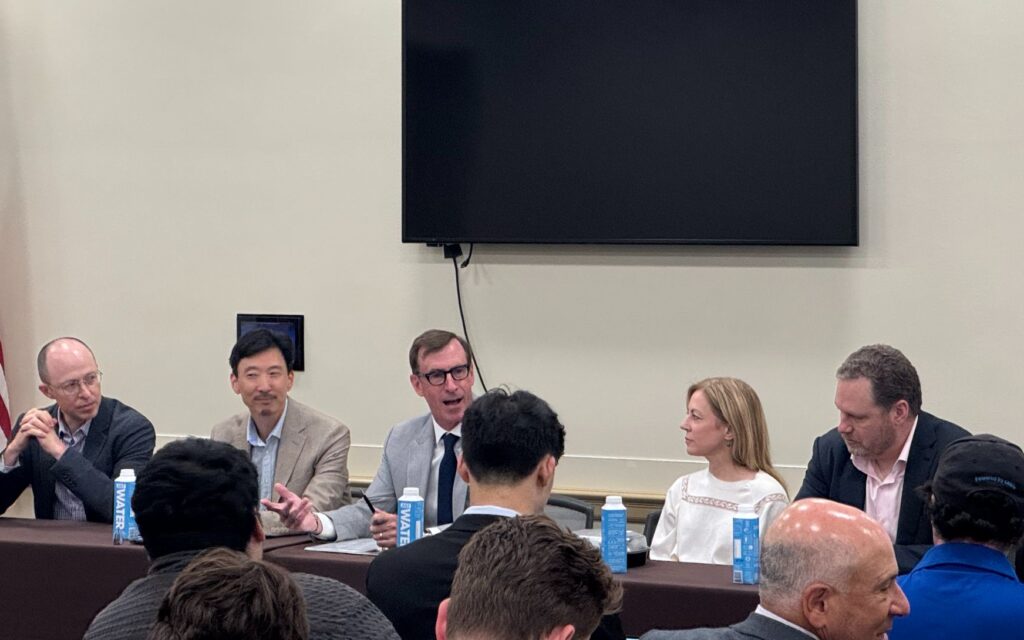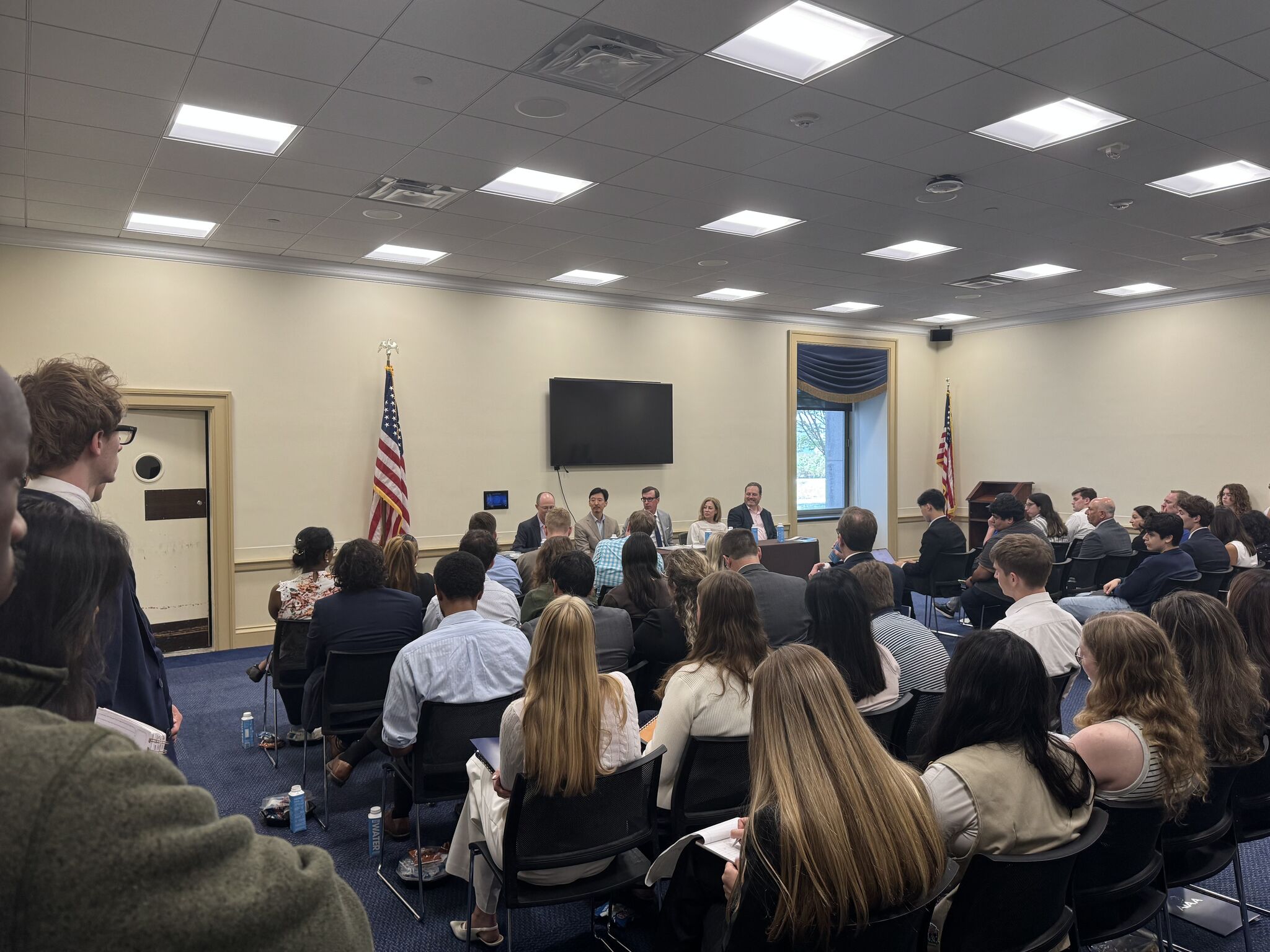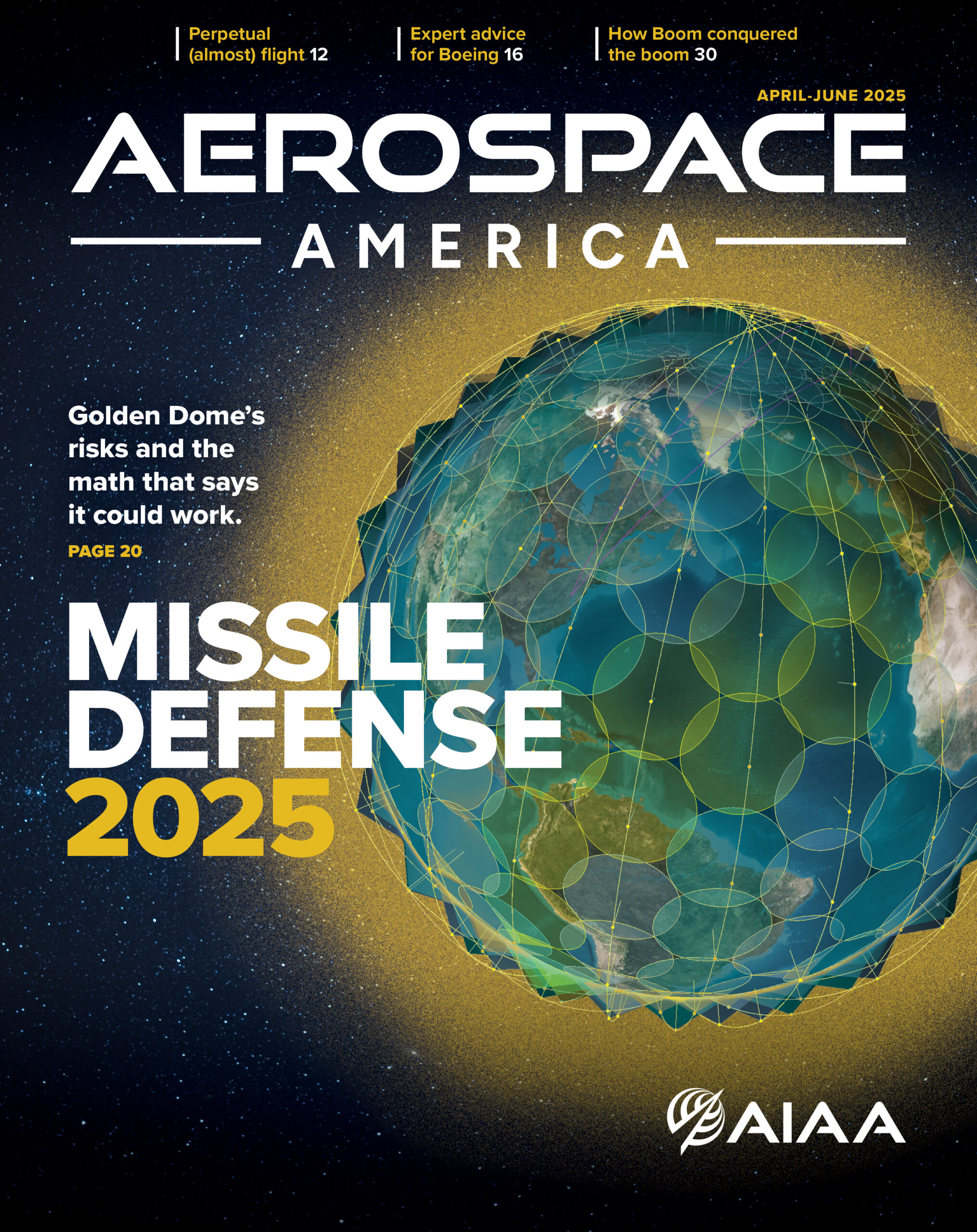“If GPS is compromised, the consequences will cascade across sectors, from defense to commerce to everyday civilian life. This is not a theoretical risk; it is a strategic imperative,” stated AIAA CEO Clay Mowry at a July briefing at the U.S. House of Representatives.
The lunchtime discussion, jointly hosted by AIAA and the House Aerospace Caucus, brought together more than 80 Congressional staff, industry leaders, and stakeholders to hear an expert panel assess the state of U.S. positioning, navigation and timing (PNT) capabilities that support the Global Positioning System (GPS). The panel emphasized the need for the United States to maintain our resilience and leadership in the years ahead.
Moderated by Mowry, the panel included Lisa Dyer, executive director of the GPS Innovation Alliance (GPSIA); Todd Harrison, senior fellow at the American Enterprise Institute (AEI); Jason Kim, principal at Solution Space; and Brian Weeden, director for Commercial and Civil Policy at The Aerospace Corporation’s Center for Space Policy and Strategy.
Mowry opened by emphasizing the omnipresence of PNT in our daily lives. “We’re using it just about every millisecond of every day, in everything we do, from securing financial transactions to guided military precision.” He noted the risks the United States faces by relying on its singular GPS system in the face of growing threats, stressing the need for this type of conversation.

Panelists largely concurred that the era of uncontested American dominance in global PNT has ended.
“Everyone built their own systems because they didn’t want to rely on the U.S., and we can’t really put that genie back in the bottle,” noted Weeden.
Instead, they emphasized the need for the United States to strive for PNT superiority and safeguard our national security and economic interests by ensuring our systems remain the most reliable, innovative, and resilient going forward.
The panel shifted to addressing the most pressing risks PNT faces.
While much attention has been devoted to the possibility of direct attacks on satellites themselves, Harrison pointed out that attacks on PNT have occurred far more frequently at the terrestrial level. “Why would you go through the trouble of launching an anti-satellite weapon and blowing up 30 satellites in space when you could just jam or spoof it? It’s so much easier.”
Dyer concurred, highlighting that industries like commercial aviation—where planes are largely reliant on a singular GPS L1 C/A signal—are particularly vulnerable to jamming, spoofing, and similar attacks. She stressed that countermeasures already exist but emphasized that progress depends less on technical capability than on adequate funding and political will.
When asked about how the United States could strengthen the resilience of its PNT infrastructure, panelists agreed that no single solution would be able to address every vulnerability.
Several commercial ventures are currently building LEO constellations and exploring new signal bands to complement GPS; however, each approach introduces a distinct set of challenges, from susceptibility to natural disasters to technical and operational complexity.
Weeden cautioned against viewing PNT as a single, unified system. He noted that military, civil, and commercial users each face distinct challenges and solutions. “M-code is a great part of the military solution, [but] it is not going to help with commercial and civil problems.”
The panelists emphasized the crucial priority of addressing bureaucratic hurdles and chronic delays stymieing progress, issues Kim witnessed firsthand. “When I started my previous job in 1998, I spent the whole first year helping design the first new signals that we were going to add to GPS for civil use. We spent a year deciding what frequencies to use, and we still don’t have those signals in operation today because the DOD acquisition system is too slow.”
Looking ahead, panelists called for a renewed national commitment to technical modernization and institutional cooperation. Achieving true resilience will require overcoming bureaucratic inertia, deepening public-private partnerships, and bolstering adaptability as threats evolve, they agreed.
With U.S. leadership in PNT now facing unprecedented challenges, the stakes for sustaining secure and reliable systems have never been higher. “It is clear we need a more resilient GPS system, applicable to both civil and national security needs,” Mowry concluded.




